One version of the Aztec creation myth tells how Xolotl, the dog-headed god of lightning and fire, slayed his fellow deities and then transformed himself into a salamander in an attempt to hide from death.
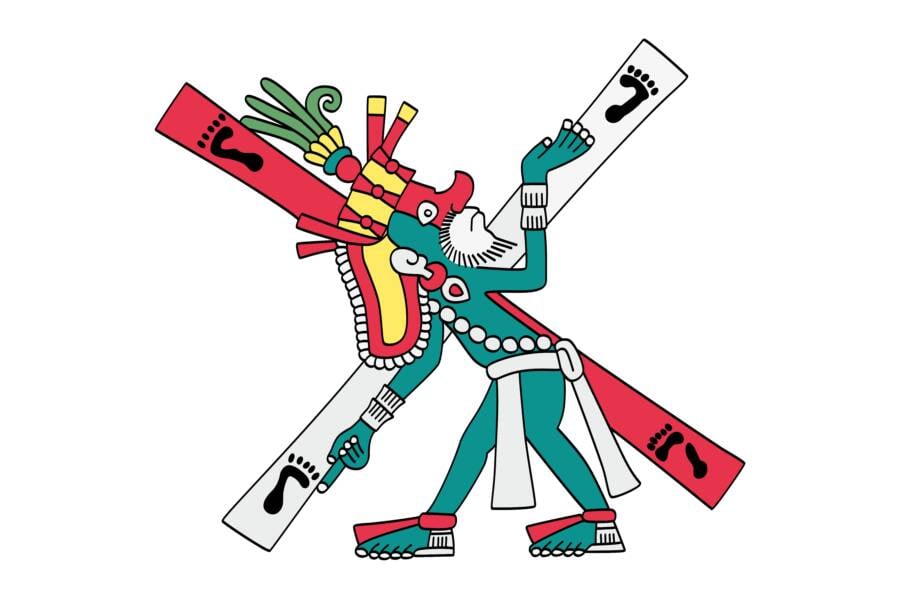
Peter Hermes Furian / Alamy Stock PhotoAn artist’s depiction of Xolotl, the Aztec god of lightning and fire.
The Aztec deity Xolotl was seen as the twin brother of Quetzalcoatl, the feathered serpent god linked with life and light. In many ways, Xolotl was Quetzalcoatl’s opposite. He was associated with sickness, deformities, and even death, but he was not considered evil.
Xolotl didn’t bring death to the Aztecs. Rather, he was a psychopomp, or someone who guided souls to Mictlan, the Aztec Underworld. In the culture’s mythology, dogs were also believed to help their masters travel to the afterlife, so Xolotl was often depicted with a dog’s head.
The deity also played a major role in the Aztec creation myth. He helped Quetzalcoatl retrieve bones from Mictlan to create modern humans — but he also killed his fellow deities and then tried to cheat death himself.
Overall, Xolotl is a perfect representation of the Aztec belief system, in which life and death are interconnected, transformation is constant, and balance is essential for the stability of the universe. And, like his twin brother Quetzalcoatl, Xolotl’s place in history extended beyond the Aztecs.
The Ancient Origins Of Xolotl, The Dog-Headed Aztec God
Like in any ancient culture, tales involving Xolotl were passed down through oral tradition, making it difficult to trace the exact origins of when the deity first emerged.
Xolotl is similar to other canine gods worshipped by the Maya and the Zapotecs — particularly in his association with lightning — suggesting his true roots may lie in earlier Mesoamerican cultures.
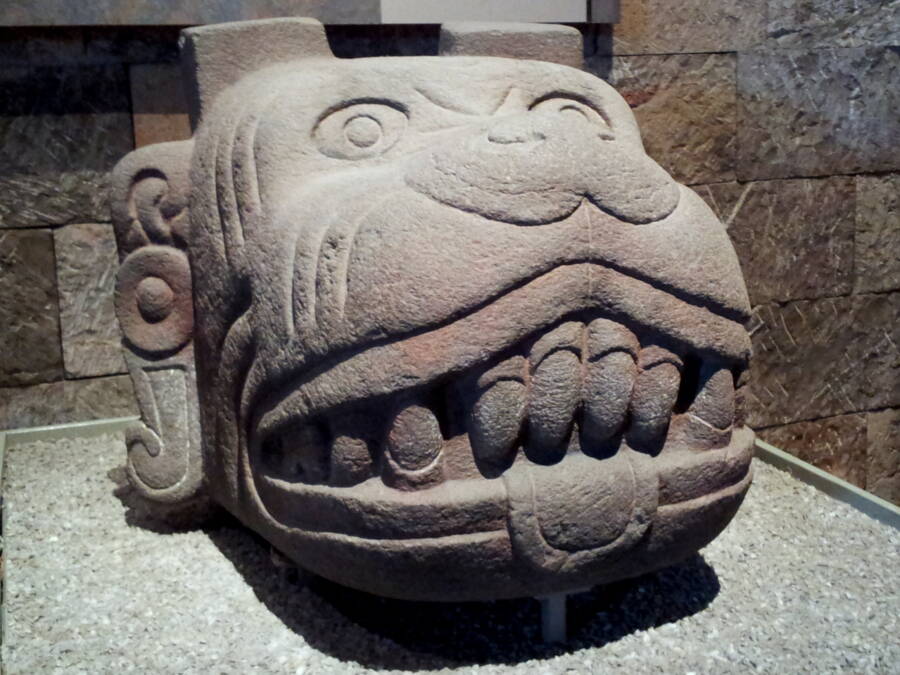
Adamt/Wikimedia CommonsA Xolotl statue on display at the Museo Nacional de Antropología in Mexico City.
However, Xolotl is differentiated from other deities by his association with Quetzalcoatl. As twins, Xolotl and Quetzalcoatl represented opposing forces. Quetzalcoatl was associated with life, light, and the morning star, while Xolotl embodied death, darkness, and the evening star. They balanced each other out and created cosmic harmony.
Although Xolotl was the god of lightning and fire, he was also tied to twins, dogs, deformities, sickness, and misfortune. Depictions of the deity often included a dog’s head atop a skeletal body. Often, his feet were backward and his eye sockets were empty.
In addition to leading souls to Mictlan, Xolotl was tasked with guiding the Sun through the land of the dead every night until it rose again each morning.
Furthermore, Xolotl was known to represent transformation, as evidenced by his own ability to change into various forms, including the maize plant and, as his name suggests, the axolotl. He also served as a psychopomp, guiding the souls of the deceased through the nine levels of Mictlan, the Aztec Underworld. What’s more, his role in Mictlan also helped lead to the creation of humanity.
Xolotl’s Role In The Aztec Creation Myth
While the four Aztec creator gods were brothers Quetzalcoatl, Xipe Totec, Huitzilopochtli, and Tezcatlipoca, Xolotl also played an important role in the culture’s creation myth.
The legend tells of the “Five Suns,” or five cycles of creation, destruction, and rebirth that some ancient Mesoamericans believed the universe experienced. Xolotl’s story comes in during the creation of the Fifth Sun, which is the current era of humanity.
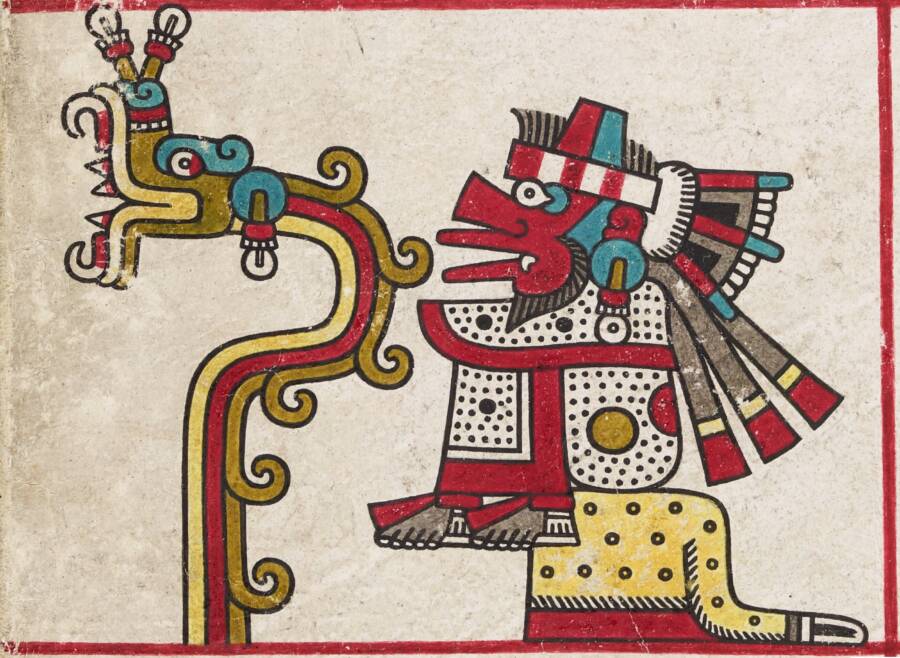
Public DomainQuetzalcoatl, the twin of Xolotl and one of the main gods in the Aztec pantheon.
While there are several versions of the myth, one interpretation tells how Xolotl and Quetzalcoatl traveled to Mictlan at the end of the Fourth Sun to retrieve the bones of past generations and form them into new people.
They faced numerous challenges set by Mictlantecuhtli, the lord of the Underworld, but they eventually secured the bones. Quetzalcoatl then ground them and mixed them with his own blood, giving birth to the humans of the Fifth Sun.
Meanwhile, the new Sun remained still. The gods soon realized that additional sacrifices would be necessary to set the Sun in motion and sustain its journey across the heavens. Some versions of the creation myth tell how the gods realized they would have to die for the advancement of humanity, and they tasked Xolotl with killing them before taking his own life.
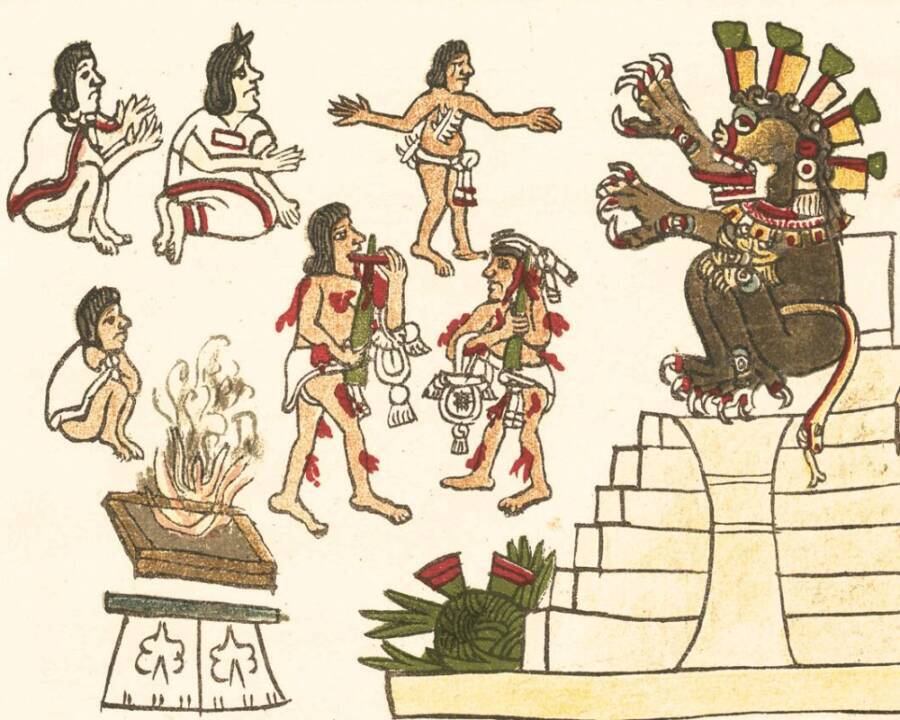
Public DomainMictlantecuhtli as portrayed in the Codex Magliabechiano.
Xolotl, however, was reluctant to face death. After slaying the other deities, he attempted to flee. He transformed himself into a maize plant and a salamander known as an axolotl to hide, but the wind god Ehecatl ultimately found him and killed him.
Other iterations of the tale state that Xolotl was so sad after killing the other gods that he cried until his eyes fell out of their sockets. This is why he was often depicted with empty eyes in Aztec art.
Ultimately, the sacrifice of the deities set the Sun in motion, and their sacrifices were, in turn, rewarded by various human sacrifices in their honor ever after.
Rituals And Ceremonies That Honored The Aztec God Of Lightning And Fire
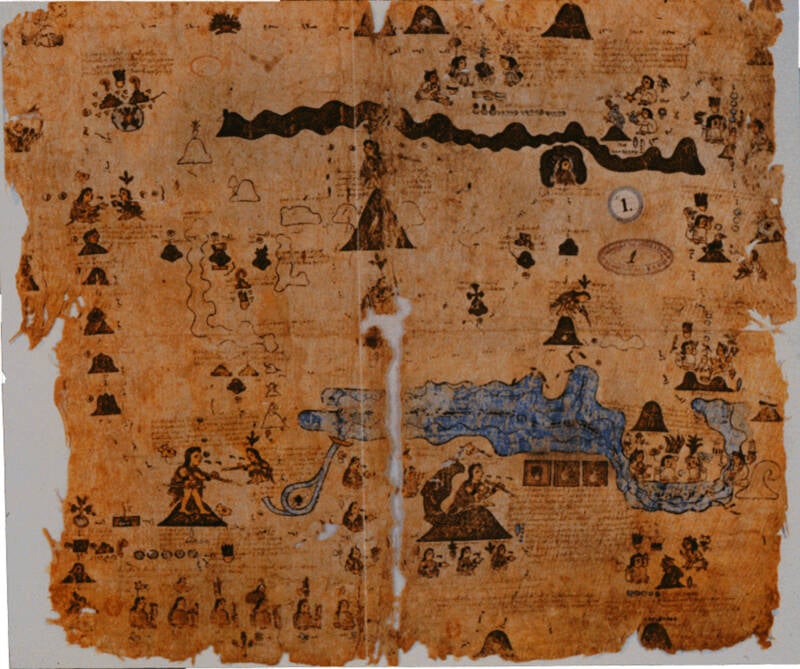
ART Collection / Alamy Stock PhotoA map seen in the Codex Xolotl, which tells the history of the 13th-century Aztec king Xolotl, who was named for the god of lightning and fire.
Xolotl ultimately came to be venerated as the god of fire and lightning, but the duality of his nature was not lost on the Aztec people who worshipped him. Offerings made in his honor included food, incense, and, in some instances, animal sacrifices. All of these were meant to appease Xolotl, ensuring his guidance and protection, particularly in matters related to death and the afterlife.
There were several festivals and celebrations held in Xolotl’s honor, the most notable of which was Hueymiccaihuitl, or the Great Feast of the Dead. The festival occurred during the 10th month of the Aztec calendar and was dedicated to honoring deceased ancestors. It involved rituals that acknowledged Xolotl’s role as a guide for souls to the Underworld.
During the festival, families presented food, flowers, and other goods to honor their departed loved ones, asking for Xolotl’s assistance in helping the souls of the deceased find their way to Mictlan safely. They also lit bonfires that were meant to symbolize light guiding souls through the darkness of the Underworld — which, of course, also represented Xolotl’s nature as a god of fire.
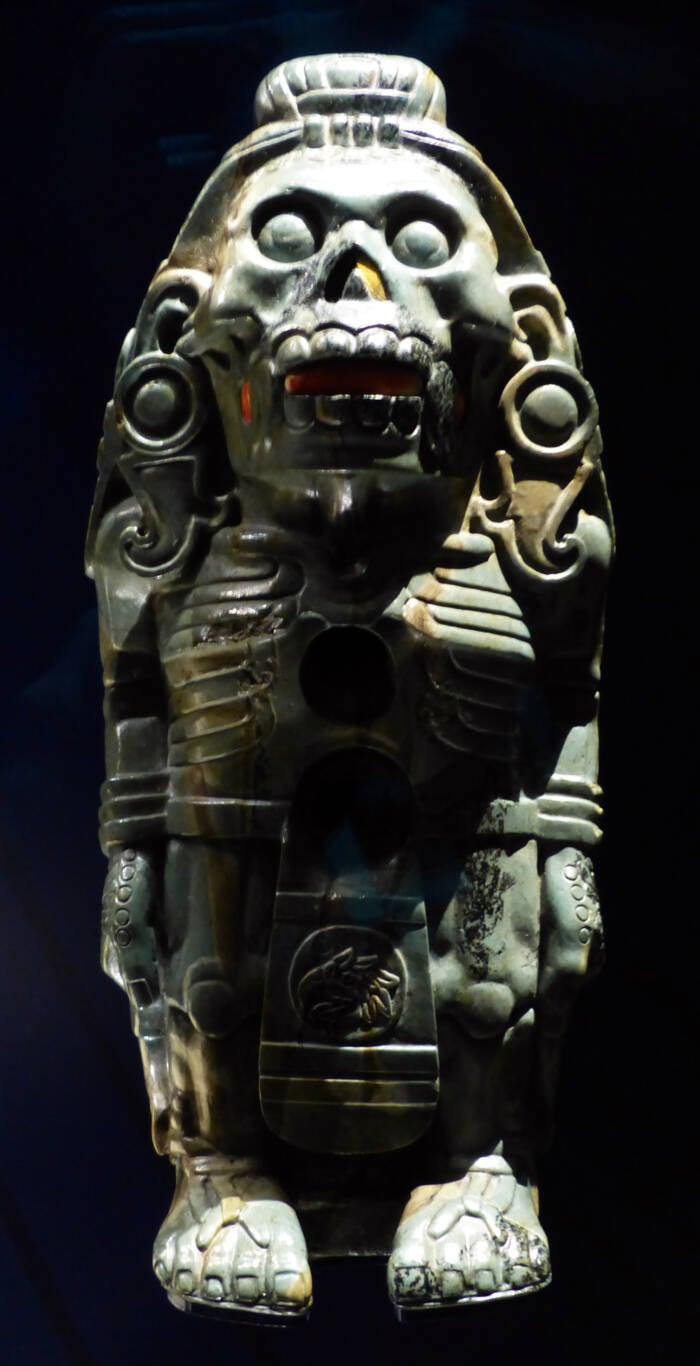
Dr. Bernd Gross/Wikimedia CommonsA statue of Xolotl, represented here as a skeletal dog.
Ultimately, however, it is impossible to discuss Xolotl without mentioning Quetzalcoatl. While referenced as separate gods in modern writing, the two were inseparably worshipped, each representing the twin phases of Venus. They were two sides of the same coin — distinct gods, but each one half of a greater entity.
The relationship between these two deities is representative of the larger context of Aztec mythology. Throughout Aztec myths, duality, transformation, and an interconnectedness between life and death are common motifs, and they are perhaps no better illustrated than by the stories of Quetzalcoatl and Xolotl.
After this look into the Aztec god Xolotl, learn all about the murky history of the Aztec death whistle. Then, explore Mexico’s stunning Aztec pyramids through our gallery of photos.





